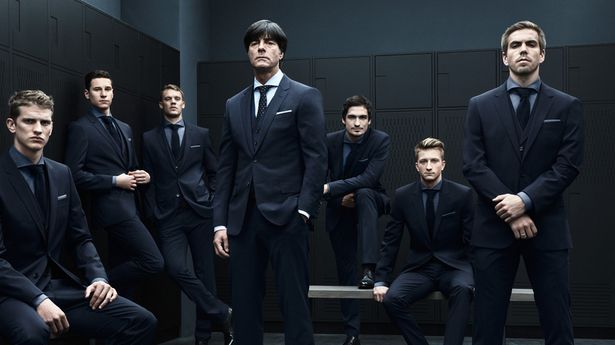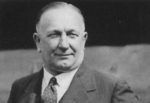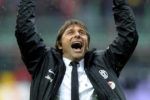The greatest fallacy of success is that you will never have the opportunity to enjoy your achievements. Joachim Löw, the Manager of the German National Team, is living this adage as he attempts to rebuild the German National Team after their 2014 World Cup victory.
Löw has the job of fixing the positional flaws that Germany was able to overcome in route to the 2014 World Cup victory. He also must fix the new weaknesses created by the international retirements of Centerback Per Mertesacker, Rightback Phillip Lahm, and Center Forward Miraslov Klose.
The Central and Attacking Midfield positions are the foundation of the German National Team. Germany has more experience, depth, and diversity of play than any other nation in World Football. This gives Löw an unmatched freedom to build his team in what is the most essential area of the field, as the team that can control the central midfield, either through possession or positioning, controls the flow of the match. Unlike most teams, Germany has the freedom to build their midfield and team around any combination of possession, technique, tactical intelligence, work rate or physicality. While this gives Löw more opportunities than any other Manager, he must do everything possible to overcome the Paradox of Choice.
The Paradox of Choice is a psychological and economic theory that states that the more choice a person has, the harder it is for a person to make a choice and to fully value that choice, as you overestimate the expectations of that choice. The Paradox of Choice cost Löw and the German National Team at the 2012 European Championships. After three wins in their group, and after scoring five total goals, Löw decided that his attack was not as strong as it should be. In the quarterfinal playoff match against Greece, he replaced three of his front attacking four, each of whom had started all of the previous games. At the Left Wing position, Marco Reus replaced Lukas Podolski. On the Right Wing, André Schürrle replaced Thomas Müller, and at Center Forward, Miraslov Klose replaced Mario Gómez. Germany won the match 4-2. In their next match, a semifinal match against Italy, Löw switched back to Podolski on the Left Wing and Gómez returned to the starting Center Forward position. Mesut Özil, the only player in Germany’s attack that had started in his natural position for four matches, was switched from the Central Attacking Midfielder position to the Right Wing. Toni Kroos, who had played no more than 30 minutes at the 2012 European Championships, replaced André Schürrle and played as Germany’s Central Attacking Midfielder. His defense responsibility was to mark Italy’s deep lying playmaker and creative center, Andrea Pirlo. In attack, Kroos was supposed to drop deep and link play to help combat Italy’s central midfield diamond. In defense, Kroos struggled to mark Pirlo, who was the man of the match, as Italy already had ready-made adjustments for teams who tried to mark Pirlo. In attack, Germany’s buildup was awkward and struggled to take advantage of Italy’s weak defensive flanks. In short, Löw’s multiple tactical adjustments during the knockout stages of the 2012 European Championship disrupted Germany’s attack and was a major factor in their loss to Italy.
In many ways the injury crisis that Germany experienced before the start of the 2014 World Cup was a blessing in disguise as it limited the tactical and personnel options that Löw had to choose from, while still providing depth and the ability to adjust Germany’s tactics. With Mario Gómez being left off the German squad, the age of Miraslov Klose, and the success that Thomas Müller had at the Center Forward position the previous season compared to that of Mario Götze, Müller was the default choice to play Center Forward. The injury of Marco Reus, Germany’s first choice at Left Wing, created an opening for Mesut Özil in their starting lineup. In Central Midfield, the injuries to the Bender brothers, Ilkay Gündogan, and the limited fitness of Sami Khedira led Löw to a straightforward decision to go with Phillip Lahm, Bastian Schweinsteiger and Toni Kroos as starters. The only remaining decision was between Mario Götze and Andre Shürrle for the Right Wing position. These injuries limited the possibilities for Löw to adjust his formations and tactics, thus taking away his ability to make extreme changes to Germany’s midfield and drastically alter how the team played. Now, with a potentially healthy and deep attacking and central midfield, Löw must show that he has learned from what cost him and the German National Team at the 2012 European Championships.
While the new German youth setup has created countless Central Midfielders, Attacking Midfielders, Goalkeepers and a good number of Centerbacks, Germany has struggled to develop quality Center Forwards and Fullbacks. The most difficult personnel decision Löw will have to make is who will play at both of Germany’s Fullback positions. Throughout the 2014 World Cup, Germany struggled at the Fullback position. During the first four matches Löw chose to play two Centerbacks as Germany’s starting Fullbacks. Jérôme Boateng was consistent but not spectacular, while Shkodran Mustafi and Benedick Höwedes struggled. Both were exploited multiple times throughout the tournament. Germany’s defense improved greatly after the injury to Mustafi against Algeria that forced Löw to switch Lahm back to his natural Rightback position.
With the retirement of Lahm, Löw will have to rely on new Fullbacks who have limited international experience. Three of these Fullbacks come from Borussia Dortmund – Marcel Schmelzer, Kevin Großkreutz and Erik Durm. Schmelzer has had multiple opportunities to claim the starting Leftback position for the National Team and has consistently disappointed. Großkreutz is a very energetic player but has a lower ceiling because of his limited technical ability. Erik Durm has the highest ceiling of all three, but is the least experienced, only starting his first team career in the 2013-2014 season. Germany’s other Fullback options are younger players with little to no experience at the top level of Club or International football. Sebastian Rudy is a Central Midfielder for Hoffenheim who has the ability to play at Rightback, Antonio Rüdiger is a 21-year old hybrid Rightback/Centerback from Stuttgart, and Emre Can is a hybrid Central Midfielder/Leftback from Liverpool who used to play at Bayer Leverkusen.
Germany, has also struggled to find a first team Center Forward. Miraslov Klose has been the centerpiece of Germany’s attack since the 2002 World Cup, except for the 2004 European Championship; he has scored 16 international major championship goals. As Klose aged he became less reliable as the primary starting Forward because it was harder for him to play a full 90 minutes and recover in a short time period for the next match. Mario Gómez was given the starting Center Forward position for Germany at the 2012 European Championships when Klose was 34 years old.
In forming the roster for Germany’s 2014 World Cup team, Löw decided to leave Gómez off of the roster and bring only one true Center Forward, the now 36 year-old Klose. Löw also included three Attacking Midfielders who could play as Center Forwards – Lukas Podolski, Mario Götze, and the starting Center Forward for most of Germany’s 2014 World Cup matches, Thomas Müller. Müller played as a “Wide 9.” He drifted into Germany’s wide attacking channels and to the touchline looking to find space to create, to overload his oppositions’ defenses down the flanks, and to pull defenders away from their positions in an attempt to create room for the runs of Germany’s Attacking Midfielders. Even though Müller scored four goals as a Center Forward, Germany was not able to take advantage of Müller’s positioning. With the injury to Reus and Götze starting on the Right Wing, there was no direct Attacking Midfielder to exploit the movement of Müller. After Germany’s Round of 16 match where they struggled to score against Algeria, Klose replaced Götze in the starting lineup and moved Müller to the Right Wing. Now with the retirement of Klose, Löw has to decide if he wants to give Gómez more opportunities on the National Team or play a strikerless formation.
Thus far, Germany and Löw have had an inauspicious start in the build up to the 2016 European Championships. Germany has struggled in their first two matches, a 4-2 friendly loss to Argentina and a 2-1 2016 European qualification match over Scotland. In both of these matches Löw played a 4-2-3-1 formation. Against Argentina, Germany attempted to recreate Borussia Dortmund’s pressing style of play. Out of possession, Reus and Gómez partnered each other turning Germany into a 4-4-2 press. Germany set up in a narrow and compact press with a high defensive line. When Argentina had deep possession of the ball, Reus joined Gómez creating an aggressive press for Germany. Against Scotland, a team who looked to play without possession, Germany instituted a possession style of play.
In both matches Germany was able to limit the chances Argentina and Scotland were able to create in the center of the field, however they struggled to defend both teams down the flanks. Against Argentina, Germany’s left flank was exploited. Ángel Di María was Argentina’s most dangerous player. Multiple times he was able to lose Germany’s Leftback, Erik Durm, and find room and space to attack Germany. Also, Julian Draxler, Germany’s Left Winger, did not provide defensive support for Argentina’s overlapping runs. Germany also struggled defending the runs of Argentina’s Center Forward, Sergio Agüero, who made attacking runs into Germany’s exposed defensive channels. Against Scotland, Germany struggled to defend their Right Flank. Throughout the Euro 2016 qualifier match, Scotland’s Left Winger, Ikechi Anya, was able to exploit the advanced positioning of Germany’s Right Fullback, Sebastian Rudy. Anya scored Scotland’s only goal of the match scoring the goal on a counter-attacking run.
In Central Midfield, Löw partnered Kroos with Kramer. Kroos was Germany’s deep playmaker and was responsible for the technical duties of Germany’s midfield. In possession it was his job to transition the ball from midfield to attack. When Germany transitioned from a back two to a back three, he dropped deep into Germany’s defensive line to add an extra passing option. Kramer was responsible for bringing physicality and energy into Germany’s midfield. He pressed Argentina and Scotland’s Central Midfielders who dropped deep in an attempt to find space against Germany’s press. Kramer also made late attacking runs in an attempt to find space that had been created by the movements of Germany’s Attacking Midfielders. The role Kramer played mirrored the role that Sami Khedira has had in the German National Team since he was called up for the 2010 World Cup.
In both matches Löw chose to play Marco Reus as the Central Attacking Midfielder. In the first match Reus formed strike partnership with Mario Gómez. This mimicked the role that Reus plays with Borussia Dortmund. Against Argentina, Reus’ central positioning, directness in play, and athleticism helped Germany’s press and transition style of play. However, Germany struggled when they attempted to break down Argentina’s and Scotland’s defenses. In possession Reus regularly dropped deep into center midfield to help Germany’s buildup leaving Germany’s Center Forward (Gómez in the first match and Götze in the second match) isolated.
Mario Gómez was given another chance by Löw to occupy the starting Center Forward position. Throughout the first match he struggled to hold up the ball, link play, and he wasted three full scoring opportunities. In the 57’ minute Germany substituted Mario Götze and Thomas Müller for Mario Gómez and Andre Shürrle. Müller played as a Right Winger and Götze joined Reus as a strike partner. Germany switched to a strikerless 4-4-2 formation and was very fluid in attack with their entire front four rotating their positions and linking play, creating their most dangerous attacks from prolonged possession. Löw continued with the strikerless formation against Scotland. Reus played under Götze in a 4-2-3-1, with Shürrle on the Left Wing and Müller on the Right Wing. Germany’s buildup was awkward as Reus’ physical gifts were wasted when he dropped deep to provide an extra passing option. Shürrle positioned himself by the left touchline looking to receive the ball and then dribble into the center of the field. Müller was Germany’s most dangerous player as he used his freedom to drift centrally in midfield to link play and made direct central runs to partner Götze in attack. This movement led to the opening goal for Germany as Müller joined Götze and was able to win a header giving Germany an early lead. With Reus dropping deep and Shürrle positioning himself wide left, Germany lacked fluidity in attack and Götze was isolated high up the field lacking support. Götze only attempted 27 passes throughout the match; the same number of passes attempted as Germany’s Goalkeeper Manuel Neuer.
After the first international break it seems there are just as many questions as answers for Germany. It seems that Germany will try to blend pressing and possession like the 2012/2013 Bayern Munich team. It also appears that Löw has lost faith in Gómez as a starter and will prefer a strikerless formation. Germany still has to figure out what to do at Fullback, where they are fine going forward but continue to struggle in defending their opposition’s direct attacks. Thus, Löw’s biggest challenge will be to replace Lahm and find a consistent Fullback pairing.










Recent Comments